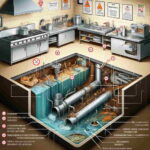Different Types of Home Demolition: Manual, Mechanical, and Implosion

Tearing down a part of your Austin home isn’t just about getting rid of the old. It’s the first step in making way for something new and better. But here’s the catch: choosing the right demolition method can leave you scratching your head. The options are plenty, and it’s easy to get lost in the details. You want the process to be smooth and efficient, and you also want to feel confident that you’re making the right choice. So, let’s break it down. Whether you’re thinking about keeping some of the old charm or completely starting from scratch, there are three main ways to go about it—manual, mechanical, and implosion. We’ll take you through each one and help you figure out what’s best for your project, and why Austin demolition services can play a crucial role in your decision.
Manual Demolition: The Selective Approach
Picture this: a skilled crew, tools in hand, carefully taking apart the parts of your home you want to preserve. That’s manual demolition in a nutshell. This method is all about going slow, being methodical, and saving things that might have value, whether it’s old hardwood flooring or antique fixtures.
Why It Works for Austin Homes:
Got an older home? Maybe it has some historical significance or valuable materials you’d like to keep. Manual demolition is often the best choice. It’s perfect when you don’t want to disturb the entire house, just certain rooms or structures. It’s also the go-to when you need to respect neighborhood guidelines or preserve architectural details.
- Pros:
- Complete control: You decide what stays and what goes. Want to keep those old wooden beams? This is your method.
- Neighborhood-friendly: Less noise, less mess, and more consideration for your neighbors. This is especially important in the tight-knit communities around Austin.
- Eco-friendly: You can recycle materials more easily, especially when you’re careful with demolition.
- Cons:
- Time-consuming: It’s not a fast process. Manual labor takes time, especially if there’s a lot to work through.
- Labor-intensive: While it’s more controlled, it’s also a lot of work. Skilled hands are needed, and they don’t come cheap.
- Costly: The longer it takes, the higher the overall cost.
Mechanical Demolition: The Standard Method
This is your typical go-to for a full teardown. Excavators, bulldozers, and other heavy machinery make quick work of structures, reducing an entire building to rubble in no time. If you’re starting fresh with a new build, mechanical demolition is likely your best bet.
Why It Works for Austin Homes:
For homes that are beyond saving, or when you need a blank slate for new construction, mechanical demolition delivers. The speed at which the job gets done makes it an efficient option, especially in neighborhoods undergoing rapid changes. However, don’t mistake speed for simplicity—it’s still a major project.
- Pros:
- Fast and efficient: This is the quickest way to clear a site. A full demolition can take only a few days.
- Cost-effective for large projects: The sheer speed of mechanical demolition helps bring down costs for full teardowns.
- Less manual labor: While heavy machinery is expensive, it requires less human labor, which can save time and effort.
- Cons:
- Noisy and dusty: It’s not exactly a quiet process. Expect your neighbors to hear and see some action.
- Expensive machinery: The machinery rental and operator costs can add up. While less labor is needed, it’s still an expensive method to run.
- Disruptive: The site will be a mess, and debris will need to be cleared properly.
Implosion Demolition: Limited Residential Applications
Implosion is the grand spectacle of demolition. Think explosives strategically placed to bring down entire buildings in a controlled collapse. Sounds dramatic, right? It’s an exciting method, but it’s rarely used for residential homes.
When Would This Apply in Austin?
Implosion is generally reserved for large, complex structures that need to come down in a flash—like an old industrial building or a high-rise. For residential homes, implosion is not only impractical but also overly complicated. However, in rare instances, it could be considered for large estates or homes too damaged for mechanical demolition.
- Pros:
- Spectacular results: It’s the fastest and most dramatic method, leaving a pile of rubble almost instantly.
- Efficient for large structures: When you need to clear out a massive building in a short period of time, implosion can be a solution.
- Cons:
- Rarely applicable: It’s typically not suitable for most homes in Austin.
- High cost and complexity: This method requires a lot of planning and expertise, making it one of the priciest options.
- Safety concerns: A highly controlled explosion could be dangerous if not handled properly.
Skills in Manual Demolition: Careful Deconstruction
You might think manual demolition just means swinging a hammer. But it’s a lot more intricate than that. It requires skilled laborers who know exactly what they’re doing—especially when it comes to preserving certain materials for reuse.
It’s all about a careful approach, making sure that materials like timber, flooring, or even decorative details can be salvaged without damaging them. These workers are more than demolition crews—they’re craftsmen. Their work requires patience and precision, ensuring the value of each item is maintained as the structure comes down.
Safety Considerations: The Importance of Hiring Licensed and Insured Contractors
You can’t afford to skip this. For any demolition project, hiring a licensed and insured contractor is essential. These professionals not only know the ins and outs of demolition but also understand the safety regulations that must be followed.
Licensed contractors ensure that your project is handled by someone who is qualified and experienced. Insurance coverage means that if anything goes wrong—an accident, an unexpected issue—you won’t be left footing the bill. It’s all about protecting yourself, your home, and your investment.
Debris Management Logistics: What Happens After the Demolition?
Once the dust settles, what’s next? The debris has to be dealt with, and it’s not just tossed away. Typically, roll-off dumpsters are used to collect and haul the waste. Larger projects might require hauling services that handle the removal process.
But that’s not all. Some demolition sites focus on sustainability. Sorting through the debris to recycle materials—like wood, metal, or concrete—helps minimize the environmental impact. You can rest easy knowing that materials are being reused or disposed of responsibly. It’s all part of the process to ensure that demolition isn’t just about destruction—it’s about rebuilding, reusing, and recycling.
+——————————————————————————————————-+
💡 Quick Takeaways
- Manual Demolition: Great for saving materials and minimizing disruption in historical or delicate homes
- Mechanical Demolition: Fast, efficient, and ideal for large projects
- Implosion Demolition: Rarely used for homes, more suitable for large structures
- Safety: Always hire licensed and insured contractors to ensure proper safety and coverage
- Debris Management: Demolition debris is handled with dumpsters, hauling services, and recycling efforts
+——————————————————————————————————-+
Conclusion: Making the Right Choice for Your Home
Choosing the right demolition method for your home is no small decision. Each option has its strengths, and which one you pick will depend on your goals, your home’s condition, and your budget. Whether you’re saving pieces of your home’s past or starting fresh, it’s crucial to work with a contractor who knows the ins and outs of the process. With the right team on your side, you’ll have the confidence to make the best decision for your property. Austin demolition services can be the key to ensuring your project is completed on time and with minimal hassle.
Frequently Asked Questions (FAQs)
Q: What permits are required for home demolition in Austin?
A: Homeowners typically need a demolition permit from the city’s Development Services Department before starting a project. However, the specific requirements can vary based on several factors, including the location and age of the home. For older homes, particularly those built before the 1980s, asbestos surveys and testing are often required. This is to ensure that any hazardous materials are properly handled before demolition begins. Additionally, homes located in historic districts or areas with preservation guidelines may undergo a historic review process, which could add time to the permit approval.
Another common requirement is notifying neighboring property owners about the demolition. This is part of an effort to maintain good neighborhood relations and prepare them for potential disturbances like noise and dust. Always check with the city to ensure all necessary steps are completed.
Q: How long does a typical home demolition take in Austin?
A: The timeline for demolition depends on various factors, such as the size and type of the home, accessibility, weather conditions, and the crew size. For example, manual demolition of a portion of a home may take anywhere from one to three weeks, depending on the complexity of the structure and materials involved. In contrast, a full mechanical demolition of a home could take just two to three days for the main demolition work, but additional time is required for debris removal, which can extend the project. Weather delays and crew availability can also impact the overall timeline, so it’s important to discuss expectations with the demolition contractor upfront.
Frequently Unasked Questions (FUQs)
Q: What material recycling or salvage options exist in Austin for demolished homes?
A: Austin offers several recovery and salvage options for building materials, allowing homeowners to recycle wood, fixtures, and other reusable materials from their demolition.
Tearing down a part of your Austin home
isn’t just about getting rid of the old. It’s the first step in making way for
something new and better. But here’s the catch: choosing the right demolition
method can leave you scratching your head. The options are plenty, and it’s
easy to get lost in the details. You want the process to be smooth and
efficient, and you also want to feel confident that you’re making the right
choice. So, let’s break it down. Whether you’re thinking about keeping some of
the old charm or completely starting from scratch, there are three main ways to
go about it—manual, mechanical, and implosion. We’ll take you through each one
and help you figure out what’s best for your project, and why Austin demolition services
can play a crucial role in your decision.Manual Demolition: The Selective
ApproachPicture this: a skilled crew, tools in
hand, carefully taking apart the parts of your home you want to preserve.
That’s manual demolition in a nutshell. This method is all about going slow,
being methodical, and saving things that might have value, whether it’s old
hardwood flooring or antique fixtures.Why It Works for Austin Homes:
Got an older home? Maybe it has some historical significance or valuable
materials you’d like to keep. Manual demolition is often the best choice. It’s
perfect when you don’t want to disturb the entire house, just certain rooms or
structures. It’s also the go-to when you need to respect neighborhood
guidelines or preserve architectural details.Pros:Complete control: You decide what
stays and what goes. Want to keep those old wooden beams? This is your
method.Neighborhood-friendly: Less noise,
less mess, and more consideration for your neighbors. This is especially
important in the tight-knit communities around Austin.Eco-friendly: You can recycle
materials more easily, especially when you’re careful with demolition.
process. Manual labor takes time, especially if there’s a lot to work
through.Labor-intensive: While it’s more
controlled, it’s also a lot of work. Skilled hands are needed, and they
don’t come cheap.Costly: The longer it takes, the
higher the overall cost.
MethodThis is your typical go-to for a full
teardown. Excavators, bulldozers, and other heavy machinery make quick work of
structures, reducing an entire building to rubble in no time. If you’re
starting fresh with a new build, mechanical demolition is likely your best bet.Why It Works for Austin Homes:
For homes that are beyond saving, or when you need a blank slate for new
construction, mechanical demolition delivers. The speed at which the job gets
done makes it an efficient option, especially in neighborhoods undergoing rapid
changes. However, don’t mistake speed for simplicity—it’s still a major
project.
quickest way to clear a site. A full demolition can take only a few days.Cost-effective for large projects:
The sheer speed of mechanical demolition helps bring down costs for full
teardowns.Less manual labor: While heavy
machinery is expensive, it requires less human labor, which can save time
and effort.
a quiet process. Expect your neighbors to hear and see some action.Expensive machinery: The machinery
rental and operator costs can add up. While less labor is needed, it’s
still an expensive method to run.Disruptive: The site will be a
mess, and debris will need to be cleared properly.
Residential ApplicationsImplosion is the grand spectacle of
demolition. Think explosives strategically placed to bring down entire
buildings in a controlled collapse. Sounds dramatic, right? It’s an exciting
method, but it’s rarely used for residential homes.When Would This Apply in Austin?
Implosion is generally reserved for large, complex structures that need to come
down in a flash—like an old industrial building or a high-rise. For residential
homes, implosion is not only impractical but also overly complicated. However,
in rare instances, it could be considered for large estates or homes too
damaged for mechanical demolition.
fastest and most dramatic method, leaving a pile of rubble almost
instantly.Efficient for large structures:
When you need to clear out a massive building in a short period of time,
implosion can be a solution.
not suitable for most homes in Austin.High cost and complexity: This
method requires a lot of planning and expertise, making it one of the
priciest options.Safety concerns: A highly
controlled explosion could be dangerous if not handled properly.
DeconstructionYou might think manual demolition just
means swinging a hammer. But it’s a lot more intricate than that. It requires
skilled laborers who know exactly what they’re doing—especially when it comes
to preserving certain materials for reuse.It’s all about a careful approach, making
sure that materials like timber, flooring, or even decorative details can be
salvaged without damaging them. These workers are more than demolition
crews—they’re craftsmen. Their work requires patience and precision, ensuring
the value of each item is maintained as the structure comes down.Safety Considerations: The Importance of
Hiring Licensed and Insured ContractorsYou can’t afford to skip this. For any
demolition project, hiring a licensed and insured contractor is essential.
These professionals not only know the ins and outs of demolition but also
understand the safety regulations that must be followed.Licensed contractors ensure that your
project is handled by someone who is qualified and experienced. Insurance
coverage means that if anything goes wrong—an accident, an unexpected issue—you
won’t be left footing the bill. It’s all about protecting yourself, your home,
and your investment.Debris Management Logistics: What
Happens After the Demolition?Once the dust settles, what’s next? The
debris has to be dealt with, and it’s not just tossed away. Typically, roll-off
dumpsters are used to collect and haul the waste. Larger projects might require
hauling services that handle the removal process.But that’s not all. Some demolition sites
focus on sustainability. Sorting through the debris to recycle materials—like
wood, metal, or concrete—helps minimize the environmental impact. You can rest
easy knowing that materials are being reused or disposed of responsibly. It’s
all part of the process to ensure that demolition isn’t just about
destruction—it’s about rebuilding, reusing, and recycling.+——————————————————————————————————-+
💡 Quick
Takeaways
materials and minimizing disruption in historical or delicate homesMechanical Demolition: Fast,
efficient, and ideal for large projectsImplosion Demolition: Rarely used
for homes, more suitable for large structuresSafety: Always hire licensed and
insured contractors to ensure proper safety and coverageDebris Management: Demolition
debris is handled with dumpsters, hauling services, and recycling efforts
Your HomeChoosing the right demolition method for
your home is no small decision. Each option has its strengths, and which one
you pick will depend on your goals, your home’s condition, and your budget.
Whether you’re saving pieces of your home’s past or starting fresh, it’s
crucial to work with a contractor who knows the ins and outs of the process.
With the right team on your side, you’ll have the confidence to make the best
decision for your property. Austin demolition services
can be the key to ensuring your project is completed on time and with minimal
hassle.Frequently Asked Questions (FAQs)
Homeowners typically need a demolition permit from the city’s Development
Services Department before starting a project. However, the specific
requirements can vary based on several factors, including the location and
age of the home. For older homes, particularly those built before the
1980s, asbestos surveys and testing are often required. This is to ensure
that any hazardous materials are properly handled before demolition
begins. Additionally, homes located in historic districts or areas with
preservation guidelines may undergo a historic review process, which could
add time to the permit approval.
neighboring property owners about the demolition. This is part of an effort to
maintain good neighborhood relations and prepare them for potential
disturbances like noise and dust. Always check with the city to ensure all
necessary steps are completed.
The timeline for demolition depends on various factors, such as the size
and type of the home, accessibility, weather conditions, and the crew
size. For example, manual demolition of a portion of a home may take
anywhere from one to three weeks, depending on the complexity of the
structure and materials involved. In contrast, a full mechanical
demolition of a home could take just two to three days for the main
demolition work, but additional time is required for debris removal, which
can extend the project. Weather delays and crew availability can also
impact the overall timeline, so it’s important to discuss expectations
with the demolition contractor upfront.
Austin’s soil conditions, such as expansive clay, can influence foundation
removal and excavation methods, potentially affecting your demolition
approach and equipment needs.What material recycling or salvage options exist in Austin for
demolished homes?
Austin offers several recovery and salvage options for building materials,
allowing homeowners to recycle wood, fixtures, and other reusable
materials from their demolition.
How does Austin’s soil type affect demolition method selection?
Austin’s soil conditions, such as expansive clay, can influence foundation removal and excavation methods, potentially affecting your demolition approach and equipment needs.








Leave a Reply